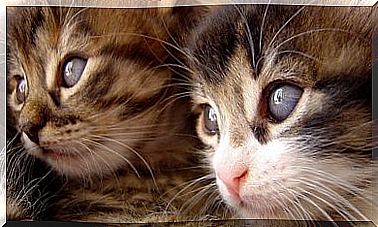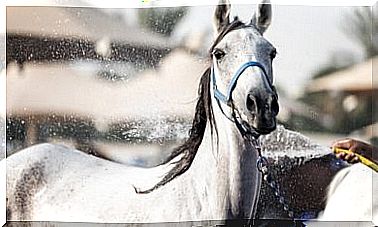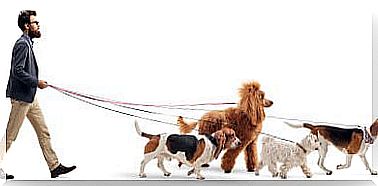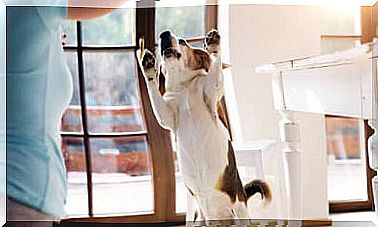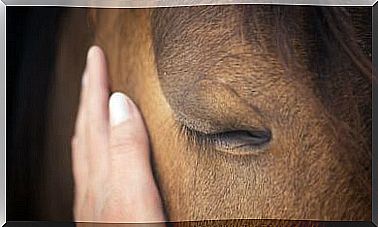Lactation In Farm Animals

Breastfeeding in farm animals is of dual health and economic importance for livestock farms.
Successful rearing management involves striking a difficult balance related to the weaning period. Advancing or delaying it increases or decreases the quantity of milk for sale and the risk to the health of the animals.
The importance of colostrum for farm animals
Ruminant species, due to the particular characteristics of their placentas, are born practically without antibodies in their blood.
Newborn ruminants are especially susceptible to various infectious diseases. For this reason, they depend on the ingestion of maternal colostrum for the passive transfer of their antibodies. Colostrum or first breast milk is your first naturally-derived vaccine.
The most frequent way to “cal show” ruminant offspring consists of supplying colostrum from their mother or from a pool of mothers in a bottle.
It is also practiced to leave the calf with its mothers the first days after giving birth. For reference, it is estimated that ruminants should consume an amount of colostrum equivalent to 10 to 12% of their weight during their first hours of life.
What does colostrum contribute?
In addition to antibodies, colostrum is a source of nutrients and growth factors that contribute to the maturation of the digestive tract. It is interesting to know that the small intestine of a newborn calf is permeable, that is, it is “open” to the passage of substances.
For this reason the offspring absorb the maternal immunoglobulins contained in colostrum. Unfortunately this characteristic is counterproductive, as it can also absorb disease-causing pathogens from the environment .
Thus, the early and sufficient lactation of colostrum is the first care that must be provided to newborns for their later health and survival.
Colostrum is also high in fat to provide energy for the young.
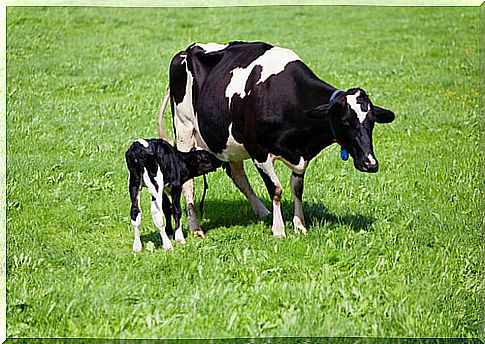
The lactation process in goats
The approximate duration of lactation in farm goats is around 250 days, and the production of a goat weighing 40 kilos is 1 to 2.5 liters per day. In any case, milk production is influenced by different factors such as race, age and the number of deliveries, among others.
In general, goats should have a 60-70 day rest without lactating before calving again. Once the baby is born, the time for breastfeeding is decided. The more time with the mother, the higher the level of immunocompetence of the calf.
The lactation cycle in cows
The initial milk production immediately after delivery is rather moderate, around 10 liters. In the following 2 or 3 weeks it grows until it reaches a peak that can reach 40 liters a day. From there it goes down until a new birth is approaching and milk production is cut off.
Keeping things simple: When the cow calves, the milking begins. At 60 days she becomes pregnant again. Milk is milked for 240 more days, while the calf is pregnant. The udders are allowed to dry for 50-60 days and another calving takes place.
This drying period occurs because the cow must regain energy before the arrival of a new calf, when a new cycle is started. Some cows produce 20,000 liters in a lactation, in the 9-10 months that it lasts, although the normal is that it is around 12,000.

Weaning: the most delicate phase of breastfeeding
Weaning, if not practiced properly, is a high risk stage for the survival of the offspring. In goats there are several ways to wean:
- Early weaning : The calf is separated from the mother after a few weeks. This type of weaning is used in technical farms to get the maximum level of milk production from the adults. Characteristic in intensive livestock.
- Normal weaning : The calf is separated from the mother when it has passed its early childhood. This is the most used method in extensive livestock practices.
- Late weaning : The calf is separated from the mother as would happen in nature. This weaning method is used above all on farms where “Pie de cria” cattle are developed (genetic selection centers for the best animals).
Weaning is one of the most delicate stages in rearing, since the calves lack milk they are forced to adapt to new foods. In that time they weaken and become more sensitive to parasitic diseases and infections.
How we have seen the production of milk in human facilities is far from the natural process. Without going any further, 48 hours after their birth and after consuming the colostrum, the calves begin to be fed with a specific serum.
Milk is a widely consumed food throughout the world, but it involves a modification of the natural life cycle of the animals involved in obtaining it.

